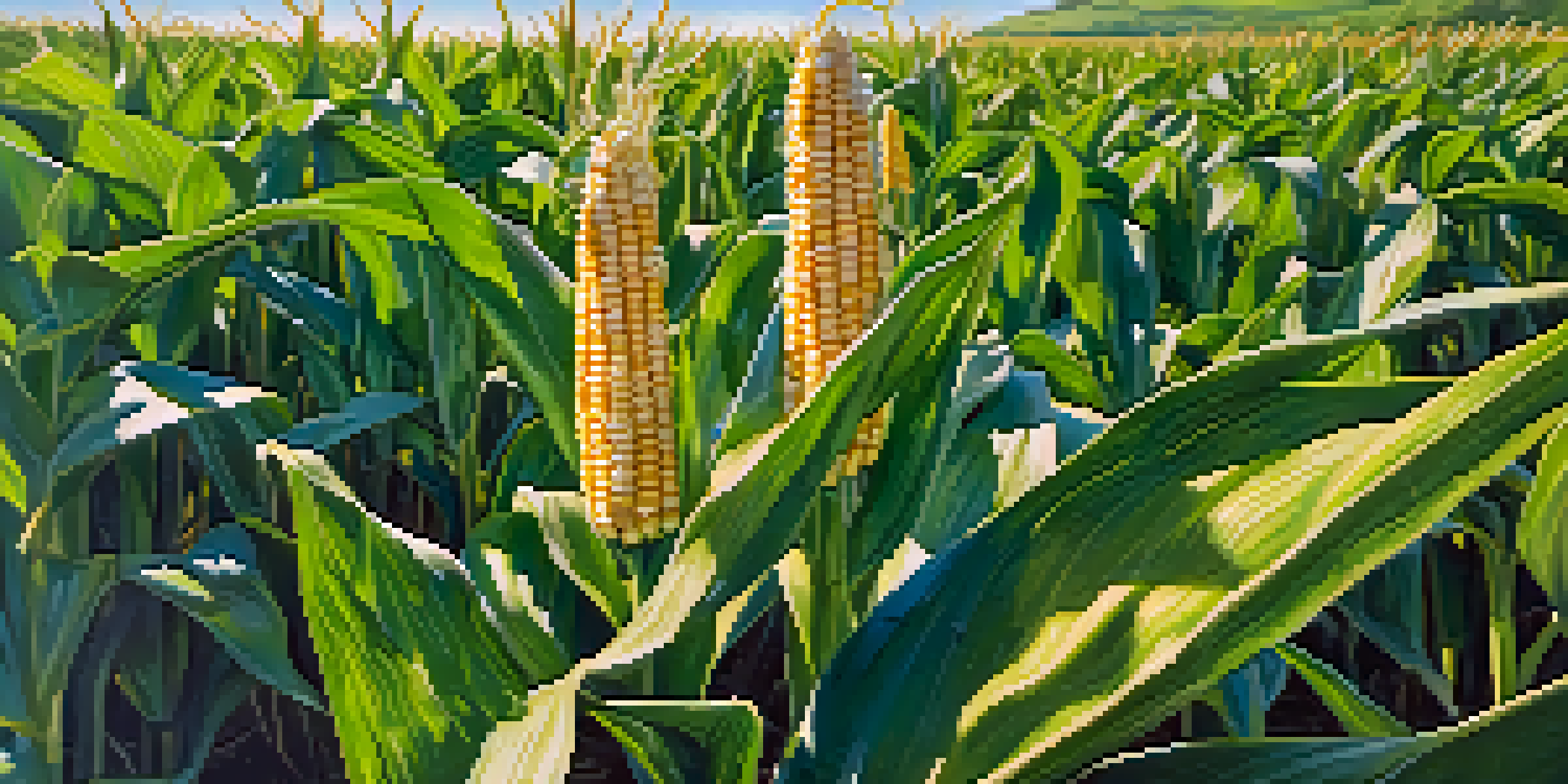Plant Biotechnology: Innovations in Genetic Modification

Understanding Plant Biotechnology and Its Importance
Plant biotechnology is a field that harnesses technology to improve plant growth and resilience. At its core, it involves manipulating plant genes to enhance traits like disease resistance, drought tolerance, and nutritional value. By employing techniques such as genetic modification, scientists can create crops that meet the demands of a growing population while minimizing environmental impact.
Biotechnology is not just a tool; it is a means to create a sustainable future for agriculture and a solution for food security.
This innovative approach is crucial as it addresses the challenges posed by climate change and food security. For instance, with unpredictable weather patterns, crops that can withstand extreme conditions are essential. The ability to modify plants at a genetic level allows researchers to develop varieties that can thrive in adverse environments, ensuring a stable food supply.
Moreover, plant biotechnology plays a vital role in sustainable agriculture. By reducing the reliance on chemical pesticides and fertilizers, genetically modified crops can lead to a healthier ecosystem. This not only benefits farmers but also contributes to the well-being of consumers and the planet.
Key Techniques in Genetic Modification of Plants
Several techniques are employed in plant biotechnology to achieve genetic modification. One of the most well-known methods is CRISPR-Cas9, which allows for precise editing of DNA sequences. This technique enables scientists to add, delete, or alter specific genes, making it possible to enhance desirable traits in plants without introducing foreign DNA.

Another technique is Agrobacterium-mediated transformation, where the bacterium Agrobacterium tumefaciens is used to transfer genes into plant cells. This method has been instrumental in producing many commercially successful genetically modified crops. By using these advanced techniques, researchers can create plants that not only survive but also flourish in challenging conditions.
Plant Biotechnology Enhances Crops
Plant biotechnology uses genetic modification to improve crop traits like disease resistance and drought tolerance.
These genetic modification techniques are not without controversy, but they hold great potential for the future of agriculture. By understanding and refining these methods, scientists can address ethical concerns while maximizing the benefits of biotechnology for food production.
Benefits of Genetic Modification in Agriculture
Genetic modification offers numerous benefits that can significantly impact agriculture. One major advantage is increased crop yields. By enhancing traits like pest resistance and drought tolerance, farmers can produce more food on the same amount of land. This is particularly important in regions where arable land is limited or declining.
The greatest challenge of the 21st century is to feed a growing population without destroying the planet.
Additionally, genetically modified crops can improve food quality and nutrition. For example, biofortified crops, which are enriched with vitamins and minerals, can help combat malnutrition in developing countries. This dual benefit of quantity and quality makes genetic modification a powerful tool in the fight against hunger.
Lastly, the environmental impact of genetic modification is noteworthy. Crops engineered to require fewer pesticides contribute to reduced chemical runoff and less harm to beneficial insects. This not only supports biodiversity but also promotes healthier ecosystems, making agriculture more sustainable.
Real-World Examples of Genetic Modification Success
One of the most prominent examples of successful genetic modification is Bt cotton. This crop has been engineered to produce a bacterial protein that deters pests, significantly reducing the need for chemical pesticides. Farmers who grow Bt cotton have reported higher yields and lower production costs, demonstrating the economic advantages of biotechnology.
Another example is Golden Rice, which has been modified to contain higher levels of vitamin A. This innovation aims to address vitamin A deficiency, a major health issue in many parts of the world. By providing a staple food source that is also nutritionally beneficial, Golden Rice exemplifies how biotechnology can improve public health.
Genetic Modification Benefits Agriculture
Genetic modification can lead to increased crop yields and improved food quality, addressing both quantity and nutrition.
These success stories highlight the tangible benefits of genetic modification in agriculture. As more examples emerge, they reinforce the potential of plant biotechnology to solve some of the pressing challenges facing our global food systems.
Addressing Concerns and Controversies Surrounding GMOs
Despite the benefits, genetic modification remains a contentious topic. Concerns about potential health risks and environmental impacts often dominate public discourse. Many people worry about the long-term effects of consuming genetically modified organisms (GMOs) and their influence on biodiversity.
To address these fears, extensive research and regulatory frameworks are in place to ensure the safety of GMOs. Studies have shown that GMOs are as safe to eat as their conventional counterparts, and regulatory bodies rigorously evaluate new genetically modified crops before they can enter the market. Transparency and education are key to alleviating public concerns.
Engaging in open dialogues about the science behind genetic modification can foster understanding and acceptance. By addressing misconceptions and highlighting the rigorous safety measures in place, the conversation around GMOs can shift towards their potential for positive change in agriculture.
The Future of Plant Biotechnology
Looking ahead, the future of plant biotechnology is promising and full of possibilities. As technology continues to advance, we can expect even more precise and efficient methods of genetic modification. Innovations like gene editing could lead to crops that not only resist pests and diseases but also adapt to changing climates.
Moreover, the integration of artificial intelligence and machine learning in agriculture can further enhance the capabilities of biotechnology. By analyzing vast amounts of data, these technologies can help scientists identify the best traits to modify for optimal crop performance, paving the way for more resilient food systems.
Future of Biotechnology is Promising
Advancements in technology and collaboration among stakeholders will drive the future of plant biotechnology towards sustainable solutions.
Ultimately, the future of plant biotechnology hinges on collaboration between scientists, farmers, policymakers, and consumers. Together, they can harness the power of genetic modification to create sustainable solutions for a healthier, more sustainable planet.
Conclusion: Embracing Innovation in Agriculture
In conclusion, plant biotechnology represents a significant leap forward in agricultural innovation. By utilizing genetic modification techniques, we can develop crops that thrive in challenging conditions, improve food quality, and reduce environmental impact. The success stories from around the world serve as a testament to the potential of this technology.
While addressing the concerns surrounding GMOs is essential, it is equally important to recognize the benefits they bring to food security and sustainability. As we move forward, embracing innovation in agriculture will be crucial to meeting the needs of a growing global population.

By fostering a culture of openness and collaboration, we can ensure that plant biotechnology continues to evolve and provide solutions that benefit both farmers and consumers. The future of agriculture is bright, and with it, the promise of a healthier, more sustainable world.